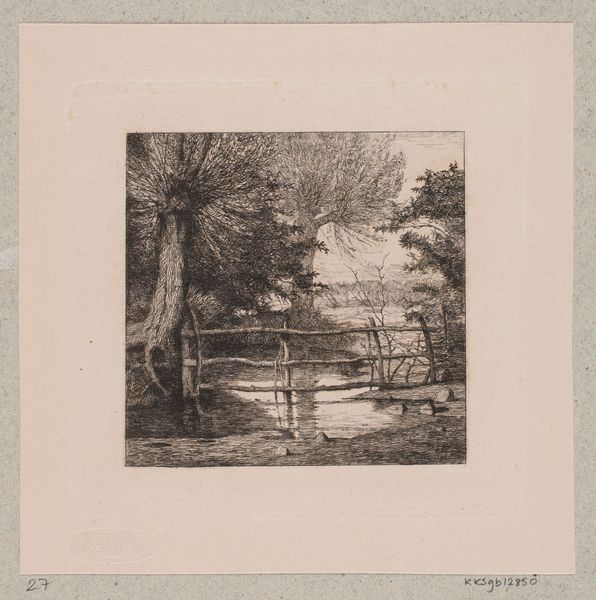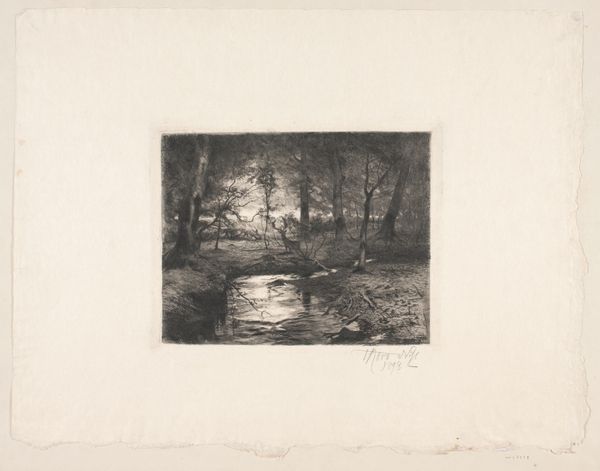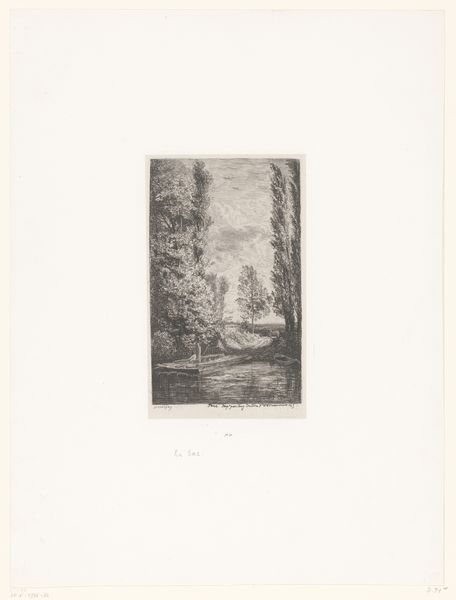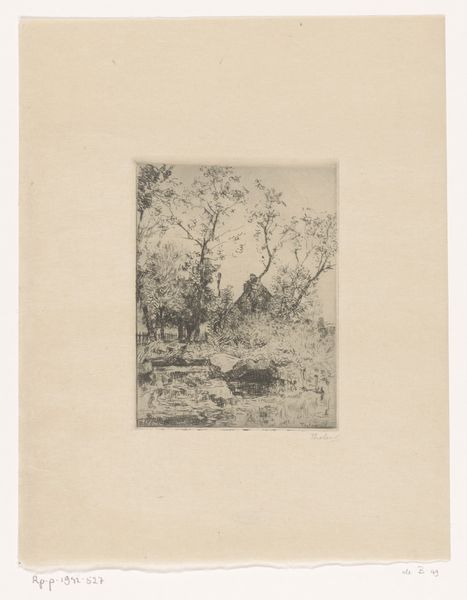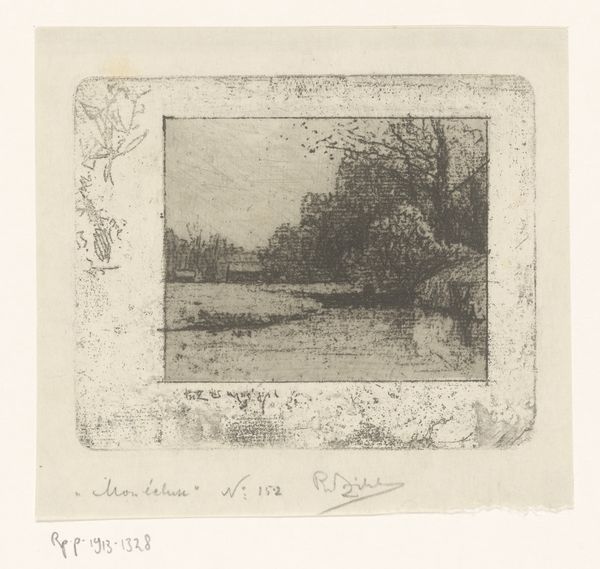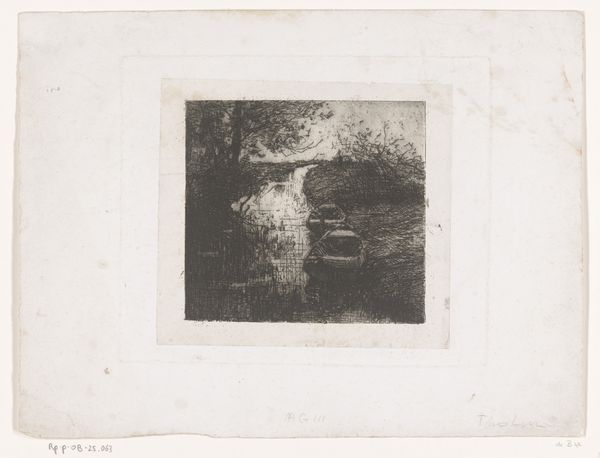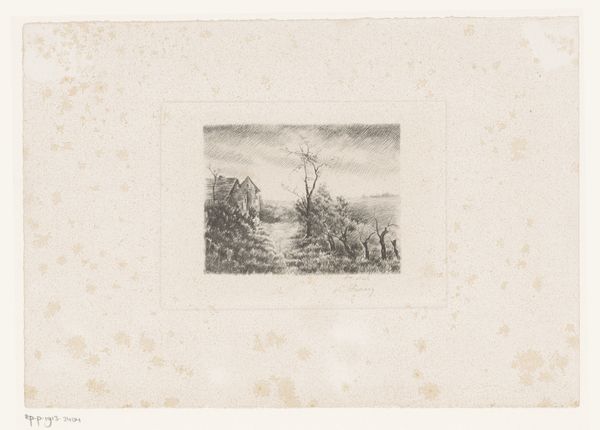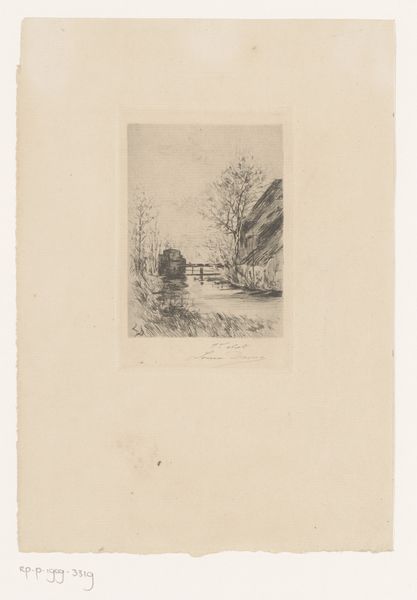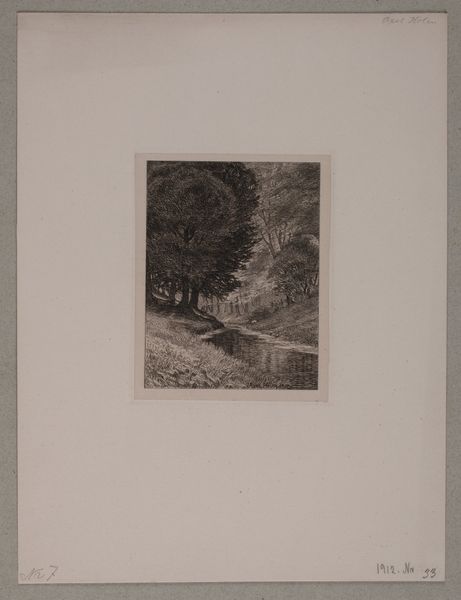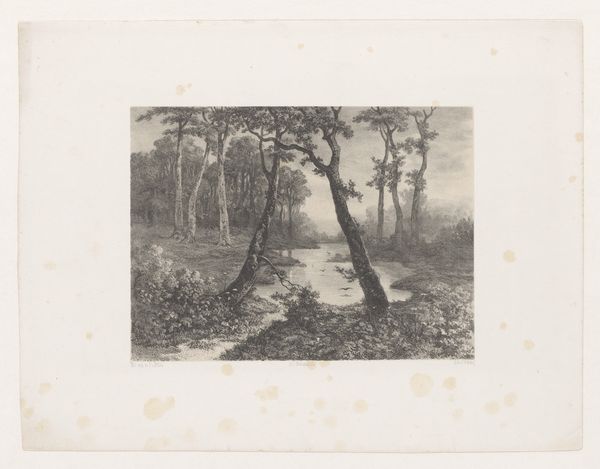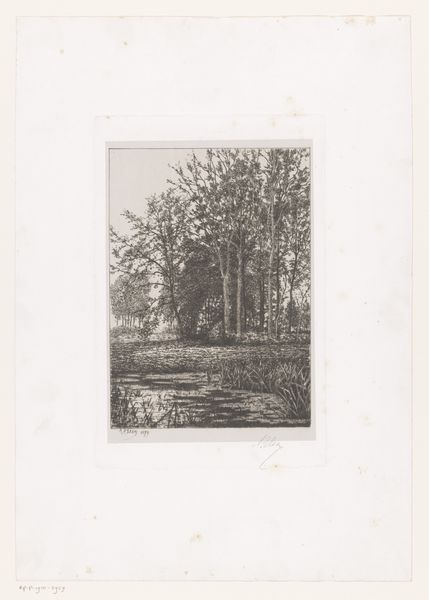
print, etching
# print
#
etching
#
landscape
#
realism
Dimensions: 124 mm (height) x 127 mm (width) (plademaal)
Otto Haslund created this etching, "Piletræer ved et vandløb," with metal plate and acid. It's traditional as a material, yet the final print embodies the skill and labor of its making. Etching is an indirect process. Haslund would have coated his metal plate, most likely copper or zinc, with a waxy, acid-resistant ground. He then scratched through the ground with a needle to expose the metal, before submerging the plate in acid. The longer the plate sat in the acid, the deeper and darker the resulting lines in the print. This time-intensive process demands patience and control. The deep blacks and fine lines create a wide range of tonality, giving depth to the water and foliage. This highly skilled practice contrasts with the industrial revolution of the late 19th century. The handmade quality of the print speaks to an earlier era, and emphasizes the value of craft in a world increasingly dominated by machines. By focusing on the materials and processes involved, we can appreciate not only the aesthetic qualities of the artwork, but also its social and cultural significance.
Comments
No comments
Be the first to comment and join the conversation on the ultimate creative platform.
